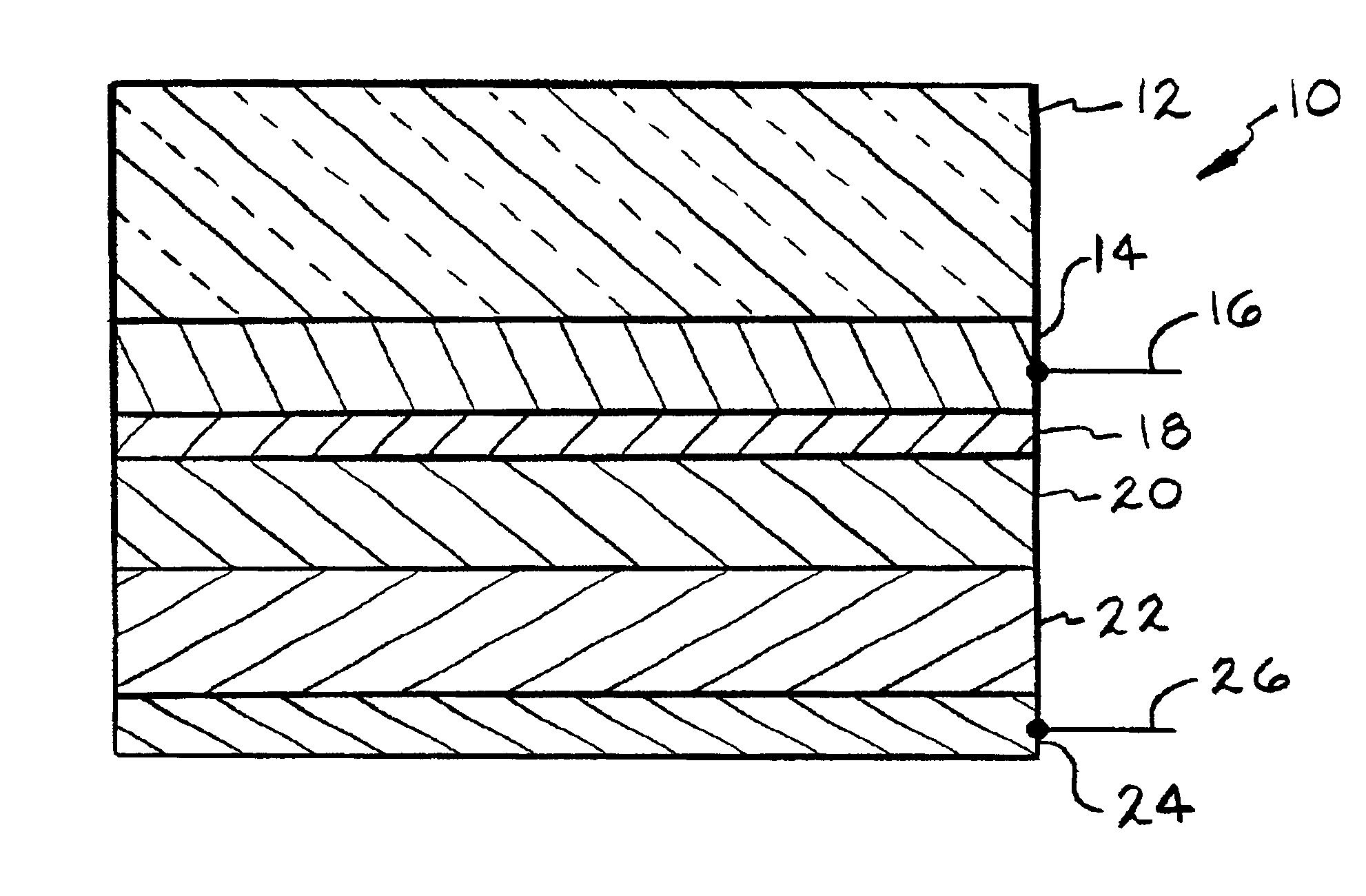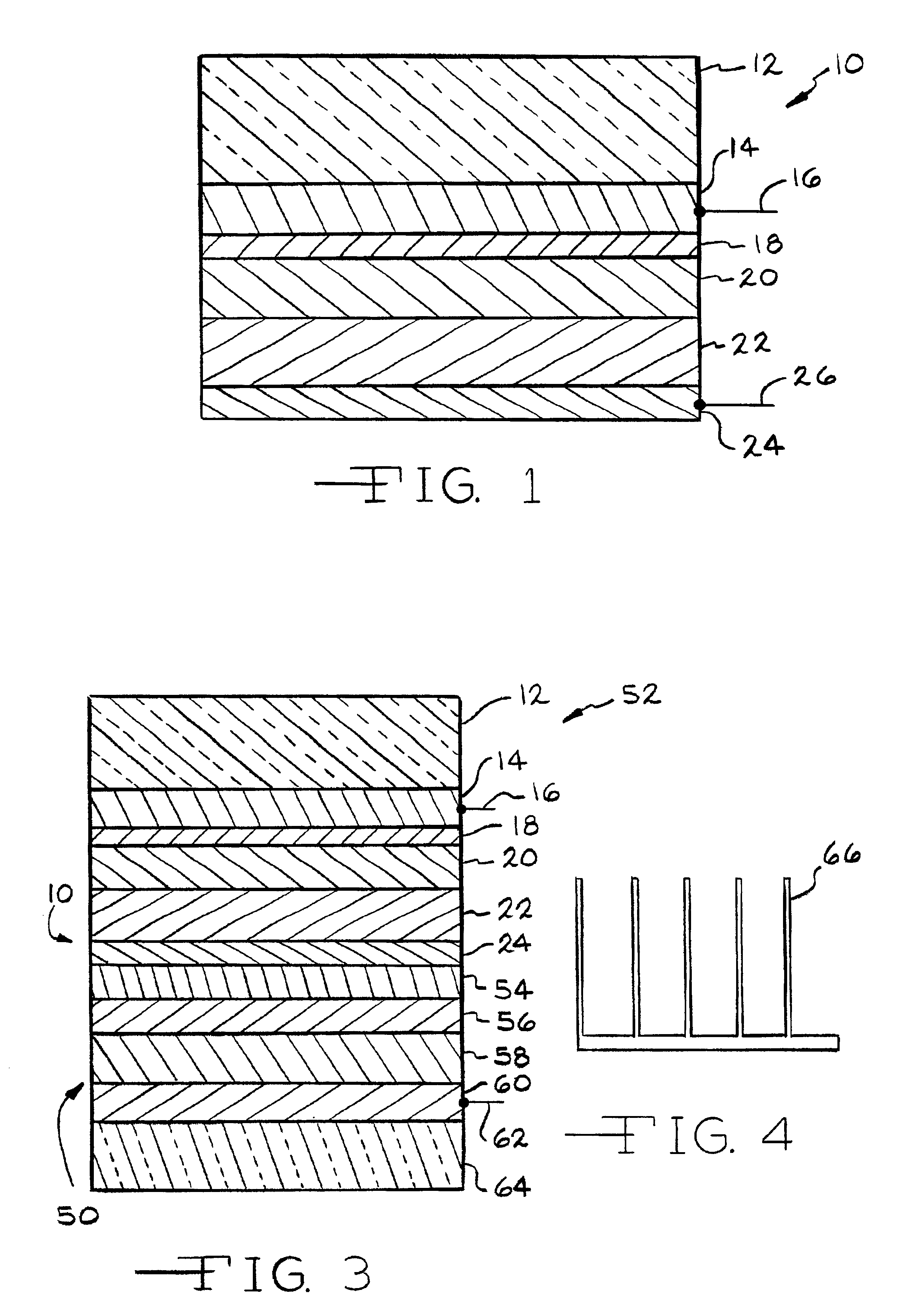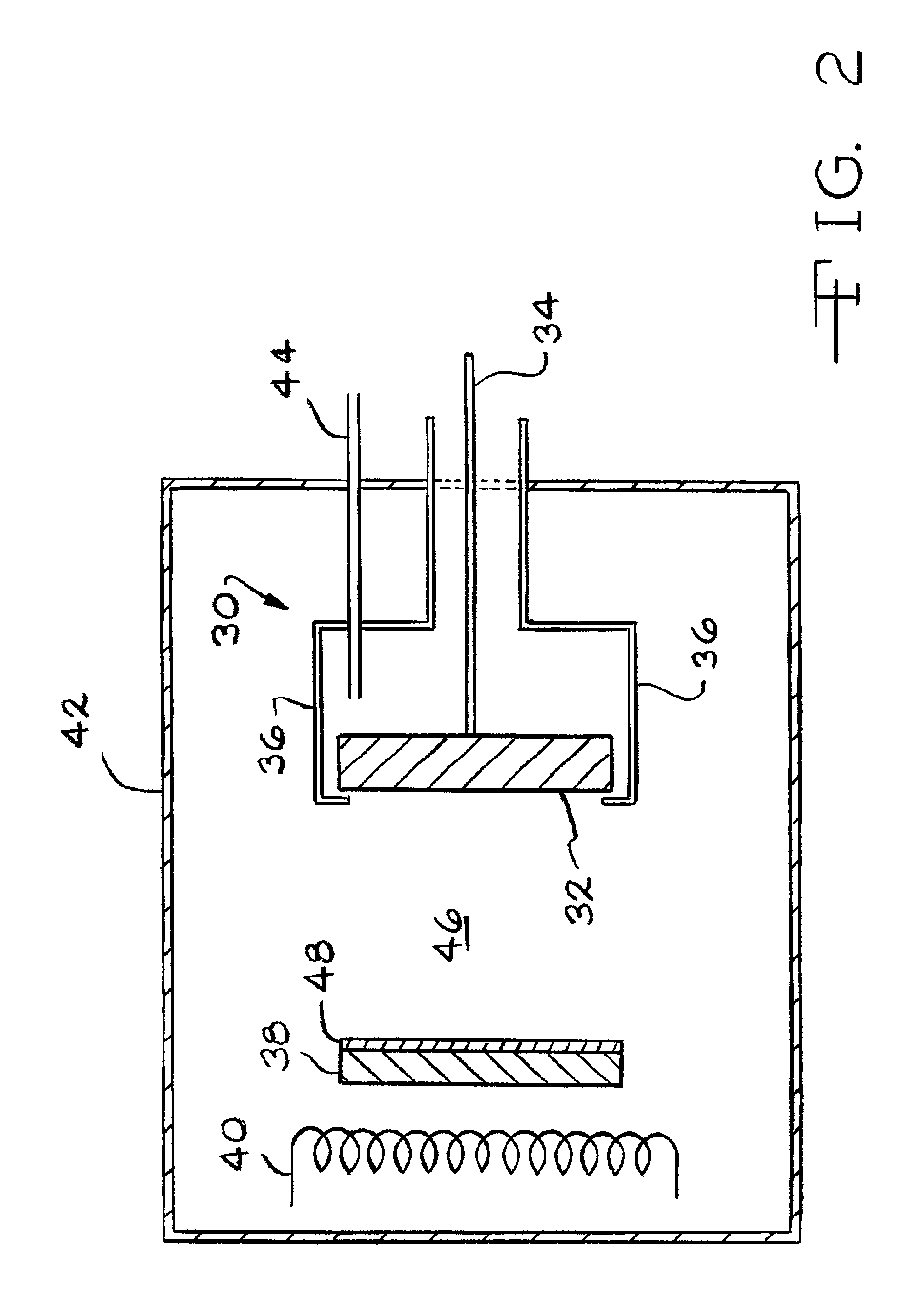Method of manufacturing semiconductor having group II-group VI compounds doped with nitrogen
a technology of group ii-group vi and doped semiconductors, applied in the direction of basic electric elements, electrical equipment, semiconductor devices, etc., can solve the problems of high manufacturing cost, significant drawbacks, and limitations of copper us
- Summary
- Abstract
- Description
- Claims
- Application Information
AI Technical Summary
Problems solved by technology
Method used
Image
Examples
example i
RF Sputtering was used to make a layer of nitrogen-doped zinc telluride in a solar cell. The reactive RF sputtering was carried out in a chamber assembled from a six-way stainless steel, copper gasketed cross with a two-inch planar magnetron mounted horizontally in one arm. The magnetron used an unbalanced magnetic field configuration. The substrate was suspended at the center of the cross about 2.5 inches from the sputter target in a heater assembly which provided radiant heating of the glass or tin dioxide (SnO2)-coated glass substrates. The preferred substrate temperature is within the range of from about 300 to about 400 degrees C. The gas flow, controlled by two parallel mass flow controllers, entered from another arm of the cross approximately in the plane of the substrate, although the gas injection can be made at the magnetron between the ground shroud (anode) and the target (cathode). In this example, the cadmium sulfide and cadmium telluride were previously deposited by a ...
example ii
The solar cell produced in Example I was tested for conversion efficiency, defined as the amount of electric energy produced as a percentage of the incident solar energy. When tested for conversion efficiency, the result was a conversion efficiency, of about 10 percent, when measured using an air mass 1.5 solar simulator.
example iii
The solar cell produced in Example I was tested for stability of the conversion efficiency. Two tests were conducted. For the first test, a set of solar cells was subjected to solar energy equivalent in intensity to the illumination provided by the sun, i.e., one-sun illumination, for a 24 hour per day, 125 day continuous exposure period, i.e., approximately 3,000 hours. The lamp used was a metal halide discharge lamp. The test was conducted under open circuit conditions at approximately 65 degrees C., with no current drawn from the cell. The test showed that the efficiency decreased about 15% over the first 1000 hours but then was stable. For the second test, a set of cells was subjected to heating at 100 degrees C. continuously in the dark for 3,000 hours. Again the efficiency dropped less than 15% during the first 1000 hours and then was stable. Similar cells with copper-based contacts lost half or more of their efficiency over this 3000 hour test. It can be seen that the efficie...
PUM
 Login to View More
Login to View More Abstract
Description
Claims
Application Information
 Login to View More
Login to View More - R&D
- Intellectual Property
- Life Sciences
- Materials
- Tech Scout
- Unparalleled Data Quality
- Higher Quality Content
- 60% Fewer Hallucinations
Browse by: Latest US Patents, China's latest patents, Technical Efficacy Thesaurus, Application Domain, Technology Topic, Popular Technical Reports.
© 2025 PatSnap. All rights reserved.Legal|Privacy policy|Modern Slavery Act Transparency Statement|Sitemap|About US| Contact US: help@patsnap.com



